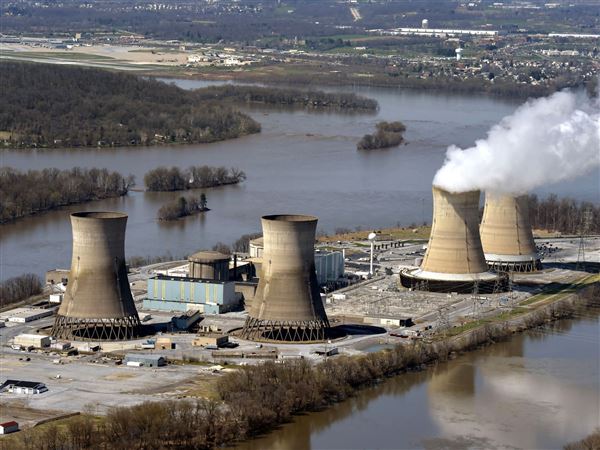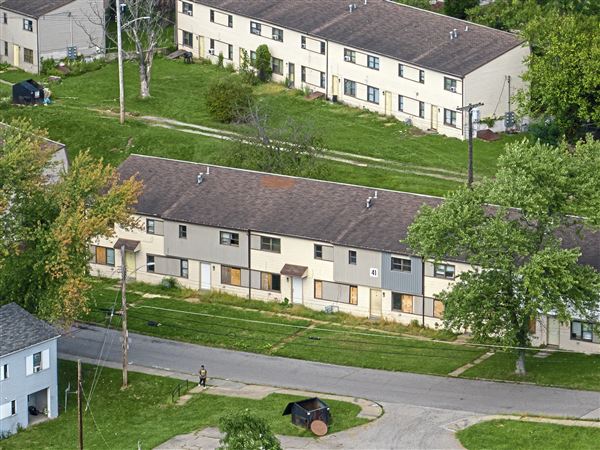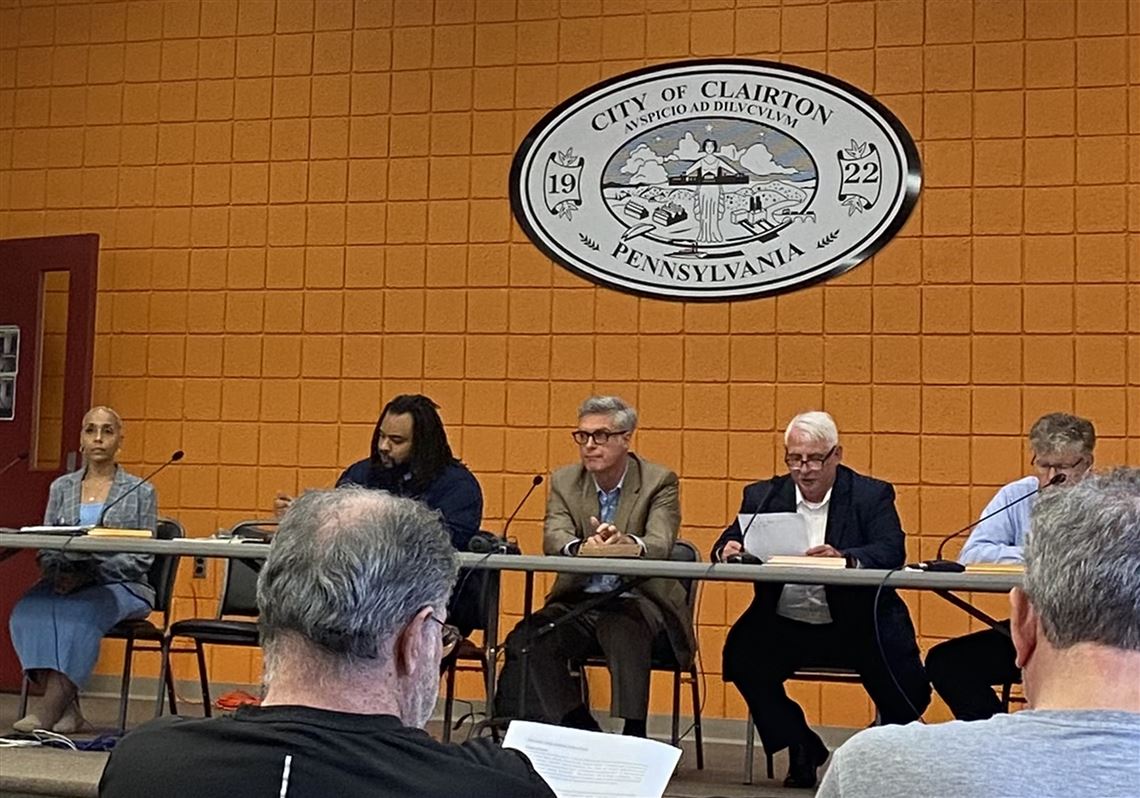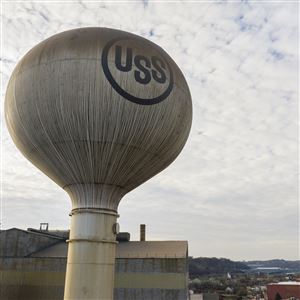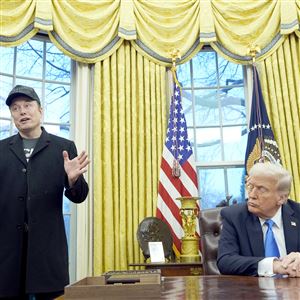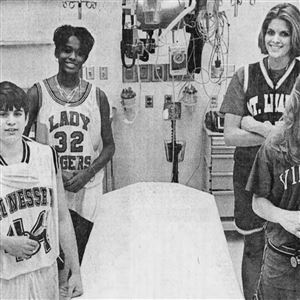Qiyam Ansari is no stranger to poor air quality. As president of Valley Clean Air Now (VCAN), based in Clairton, he understands how important it is for local communities to live in areas free of harmful pollutants.
For years, Mr. Ansari and his organization have tried to work with county health officials to apply for funds to help Mon Valley residents, specifically by purchasing air filters for their homes.
Since 2019, however, Mr. Ansari said he’s been met with “radio silence” from county health department officials. Because of that, he started attending air pollution control advisory committee meetings to see how local officials were proposing to spend funds for projects.
That’s when he noticed a problem — the money was being used to backfill other expenses, he said, and not being used the way it was intended. Mr. Ansari and others’ work caught the attention of the county controller’s office. And within the past week, that office released an audit that claims that VCAN and other environmental organizations’ concerns are accurate.
The audit says the health department has millions of dollars in funds that could be used to help the county reach federal air quality standards but are currently unspent.
It also lists multiple accounting failures, including that tens of thousands of dollars meant for the county’s Clean Air Fund have been improperly transferred to other health department funds, or that penalty transactions and fines were not properly recorded by county health officials.
Acting County Health Director Patrick Dowd disputed many of the claims in the audit, including that the county was sitting on millions of dollars in unused money. He wrote in a response that the county’s Board of Health has approved millions of dollars in grants for projects in recent years, and that contracts have been signed to execute them. Part of those includes the electrification of electric vehicles in local municipalities, but also other initiatives to clean air in local communities, he said.
County officials estimate that it might take 18 months for electric vehicles to arrive. There’s no definite timeline for the other projects, but the money has been allocated and contracts have been finalized, they said.
“Meaningful discussion of these grants and the [request for proposal] process are absent from the Audit,” Mr. Dowd wrote in his response letter.
Mr. Ansari said, “Hopefully this [audit] will force the health department to actually spend the money the way it’s supposed to be spent.”
A closer look at the audit, and environmental group responses
Money in the Clean Air Fund, a central focus of the audit, is sourced entirely from penalties collected from local air polluters by the Air Quality Program. The fund is intended to support projects that improve air quality and public health, such as air monitoring, education efforts or anything that would be applicable under Article XXI, according to the county’s website.
According to the audit, more than $10 million sat in the fund during the audit period, from January 2021 to September 2023, with only 1.6% to 6.1% being used to fund air quality improvement projects.
The county Board of Health approves the funds, with recommendations from the county air pollution control advisory committee, composed of industry officials and environmental experts.
Dan Bricmont, chair of the air pollution control advisory committee, could not be reached for comment. Dr. Lee Harrison, chair of the county’s Board of Health, which approves the funds, also could not be reached for comment.
Multiple local environmental groups expressed disappointment, but were not surprised at the audit’s findings.
Organizations have been vocal for years about the health department’s inadequate and minimal use of the Clean Air Fund, said Zach Barber, clean air advocate for PennEnvironment. There have been issues surrounding the transparency of how its funds have been used, what projects were being funded, and the process of community groups getting access to these funds.
In 2018, the health department approved using $66,000 from the clean air fund to put towards renovating its air program office in Lawrenceville. The Clean Air Council and Group Against Smog and Pollution sued the county in response, claiming, among other things, that the health department was “unlawfully interpreting its regulations and spending this money improperly,” the groups wrote in a 2022 release.
“For over a decade, the Allegheny Health Department has been squirreling away millions of dollars while neglecting residents’ health,” said Joseph Otis Minott, executive director and chief counsel of Clean Air Council, in a statement. “Using these funds to upgrade an office building, instead of improving air quality, only adds insult to injury.”
Then, in 2023, the health department forwarded a proposal to use clean air funds to cover air program shortfalls, Mr. Barber said, against the objections of the air pollution control advisory committee — which the controller’s office noted in the audit.
“That raises a significant concern that if they [the health department] are not even getting the thumbs up at the first check in the process, they should be going back and improving the request to meet the concerns,” Mr. Barber said.
In his response to the audit, Mr. Dowd wrote that county health officials have continuously worked with environmental groups to identify projects that could help improve air quality. When asked for comment on local environmental groups’ concerns, county officials pointed to Mr. Dowd’s response letter.
The audit “makes no mention of the [county health department] partnerships with organizations to more directly and expeditiously make grants to the impacted communities,” he wrote. “The [health department] created the Community Benefits Trust concept, of which the Audit makes no mention.”
Multiple environmental groups disagree. Mr. Ansari said his organization has struggled for years to get the funds from county officials for air filters for Mon Valley homes.
“When you fill out the form, there's no email confirmation. There's no follow up. There's no person or office that goes to speak with the health department,” Mr. Ansari said. “So you can speak to the air quality control committee and some other committees, but you're not speaking to a person.”
Looking ahead
While advocates are relieved to see these issues brought to light by the audit, many still feel that it “underscores what advocates have been saying for years,” Mr. Barber said. No one is sure what changes will materialize from it, he said.
“I hope it does some good,” Mr. Ansari added. “I'm not sure what punitive action will happen. ... It just seems like there's a low accountability for public officials.”
Sam DeMarco, an at-large County Council member, said this week that he had briefly reviewed the audit, and had mixed feelings. He believes that the county health department has been working diligently to achieve compliance with EPA air quality standards. And although the audit claims the county health department is leaving millions of dollars unspent on projects, it’s important that money is used in ways that actually help the community, he said.
But Mr. DeMarco also thinks that the county health department erred in not allowing organizations to apply for projects on the website, one of the audit’s findings. That said, it’s important that the audit serves as a guide for county officials and elected leaders, but not the only resource as they aim to improve air quality.
“I think the county controller audits are a tool for us to use, but I don't necessarily look at them as the gospel, or the roadmap for a solution to what is identified as a particular problem,” Mr. DeMarco said.
Groups are also hopeful of what projects will be funded by the $2.25 million given to Allegheny County Economic Development through a settlement with U.S. Steel. After a 2018 Christmas Eve fire at its Clairton plant damaged pollution control equipment, the lawsuit charged that untreated coke oven gas that was used as fuel and burned off in flares emitted significant amounts of hydrogen sulfide and sulfur dioxide into the air, almost 25 times more than normal.
The settlement amount is nowhere near as much money as what is currently sitting in the Clean Air Fund, Mr. Barber said.
“When we have these tens of millions of dollars in a county bank account and the community is out here saying we need help protecting ourselves from air pollution, I think the county needs to figure out a better and more effective way to distribute this money,” he said.
First Published: May 25, 2024, 10:00 a.m.
Updated: May 26, 2024, 2:30 a.m.
